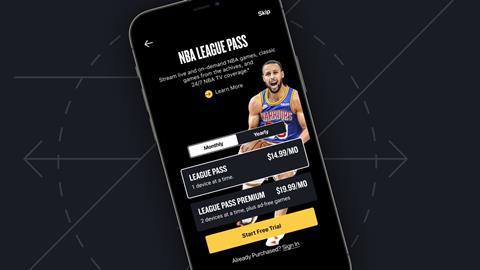Johan Bolin, CTO at Agile Content, examines whether D2C is the right option for major rights holders

In 2022, we’ve seen streaming platforms continue to snap at the heels of traditional TV broadcasters. This time, targeting unmissable live sporting events - one of the last bastions of traditional broadcaster dominance - like the World Cup in Qatar. In the UK, Prime Video now owns the rights to the Premier League. Meanwhile in Europe, specialist sports streaming platform DAZN shows the Bundesliga, UEFA Champions League, Serie A and La Liga, as well as a plethora of boxing and MMA content. And over the pond in the US, Apple and Major League Soccer recently signed a decade-long broadcasting rights deal.
As if traditional broadcasters didn’t have enough to worry about, in early 2023, Netflix will stream its first-ever live show, starring comedian Chris Rock. Though not strictly sports-related, there’s speculation that this can be read as an indicator of the company’s future intention to enter the lucrative live sports space.
What does this mean for sports owners and leagues?
With more streamers competing for their content, you’d be forgiven for thinking that sports owners are laughing all the way to the bank. Not so fast. Recent US data suggests that consumer satisfaction around streaming services is falling - particularly across content quality and value-for-money. And if Netflix’s recent drop in subscriber numbers is anything to go by, this could just be the tip of the iceberg.
Ultimately, it’s risky for sports owners to sell content to distributors whose market segmentation differs vastly from their own. They risk spreading themselves too thinly across multiple streaming platforms, leaving fans unwilling or unable to pay for multiple subscriptions. The effect? Alienating existing fans or failing to attract younger viewers, who are crucial to the long-term success of any sports franchise.
So, what’s the alternative? Many sports owners and leagues are exploring a direct-to-consumer (D2C) approach. This enables them to capitalise on the benefits of streaming, while retaining control of how their content is segmented.
The rise of team-owned streaming services?
The US NFL is a great example of a sports league taking a D2C approach, having launched its NFL+ streaming platform earlier this year. With two membership tiers priced at $4.99 (£4.10) and $9.99 (£8.21) per month (the cheaper option is ad-supported), viewers can watch all games available in their local market, as well as access radio, podcasts, and team-created content.
Why did the NFL make the leap to D2C streaming? The answer can be found in its content distribution backstory. Looking at the US market alone, nationally televised games on Sunday and Monday currently air on NBC and ESPN. Meanwhile, Sunday afternoon regional games are broadcast on CBS and Fox. And before you ask, the Super Bowl rotates between CBS, Fox, and NBC each year.
To air these games, the NFL has separate contracts with Paramount Global, NBCUniversal, Fox Corporation and Disney/Hearst. These agreements also enable the broadcasters to show games on their proprietary streaming services – Paramount+, Tubi, Peacock and ESPN+. In addition, the NFL also has streaming-only contracts with Amazon Prime, which shows Thursday Night Football, and DirecTV, which offers a subscription package that gives viewers access to all Sunday afternoon regional games.
Sounds complex, right? It certainly is. When content is fragmented across so many platforms, it’s hard to keep fans’ attention and develop close relationships. This is precisely why it makes sense for the NFL to go down the D2C route.
Will we see new content formats as a result of DTC streaming?
A crucial benefit of D2C streaming is that it offers sports owners the ability to deliver personalised, interactive content to engage specific demographics, as well as integrate merchandising, sponsorship, and ticket sales into one singular platform.
This is more important than ever given generational differences between sports fans. Unlike the devoted team fans of old, Gen Z are often more interested in following individual players. For instance, if Premier League stars Mohamed Salah or Erling Haaland were to move to La Liga, you could put money on hordes of young followers quickly switching their allegiance too! If not a behaviour now, it’s at least something that we’ll see more of in the near future with the explosion of social media that connects audiences to these individuals.
Smart sports owners will capitalise on the ‛influencerisation’ of sport by creating new content specifically designed to engage younger fans and bring in more diverse audiences. A prime example of this is the Formula 1 Drive to Survive series. By adopting a ‘reality TV’ approach that focused on driver personalities, the series almost single-handedly revitalised a sport that had been struggling with waning popularity for years. Yes, the show was created with Netflix, rather than D2C. But it demonstrates what’s possible when sports owners think outside the box and embrace new content formats.
The fundamentals
One thing is certain, with the fragmentation of sports rights across various platforms and regions, it’s becoming harder for sports owners or rights holders to generate and maintain fans’ interest. To avoid falling into irrelevancy, they and the sport leagues they operate in must change how they think about content distribution. Chances are they’ll see D2C as a tempting prospect.

Johan Bolin is CTO at Agile Content




No comments yet